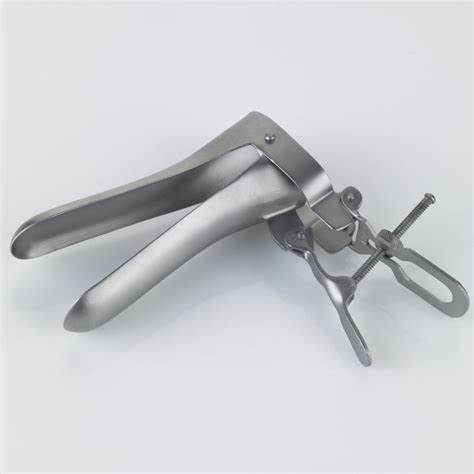
Cusco's Speculum: A Vital Instrument in Gynecological Practice
Cusco's speculum is a bivalved medical instrument commonly used in gynecology to visualize the vaginal walls and cervix. Named after the French surgeon Eugène-Louis Doyen Cusco, it has become an essential tool in both diagnostic and therapeutic procedures in women’s reproductive healthcare. Known for its self-retaining design, Cusco's speculum is widely used in pelvic examinations, Pap smears, intrauterine device (IUD) insertions, and minor gynecological surgeries.
In gynaecology, Cusco's self-retaining bivalved speculum is a kind of speculums, used for vaginal and cervical examinations. It has a jaw that opens up like a duck bill.
The instrument was named after French surgeon Édouard-Gabriel Cusco (1819–1894).[1]
It comes in three models: side screw, centre screw, and special narrow virgin size.[2] Cusco's speculum is usually 80 millimeters (3.1 in) long and 22 millimeters (0.87 in) broad. However, smaller and larger sizes are available. Cusco's speculum is used for introducing an intrauterine contraceptive device, taking a Pap smear, cauterization of vaginal erosion, and colposcopic examination.[3] It is preferred in cryosurgery because it protects the anterior and posterior vaginal wall. The advantage of Cusco's speculum is that it is self-retaining. Therefore, an assistant's help is not needed to keep the speculum in place. It also acts as the vaginal wall retractor. However, it reduces the space in the vaginal cavity and therefore is not a preferred instrument for vaginal surgery. Because it covers most of the vaginal wall, small lesions on the vaginal wall may be masked by the blades of the device.[4]
Cusco's speculum is typically made of stainless steel, although disposable plastic versions are also available. It consists of the following key components:
Cusco's speculum comes in various sizes (small, medium, large) to accommodate different anatomical needs, such as in nulliparous, multiparous, or postmenopausal women.
There are two main types:
Cusco's speculum is employed in a variety of gynecological scenarios:
Allows inspection of the vaginal walls and cervix for lesions, infections, or abnormal discharge.
Enables access to the cervix for cervical cell collection to screen for precancerous changes or cervical cancer.
Provides a clear view and stable access for safe insertion or removal of contraceptive devices.
Used in conjunction with a colposcope to closely examine the cervix following abnormal Pap smear results.
Includes applications like cervical biopsy, cryotherapy, or electrocauterization of cervical erosions.
Metal Cusco's specula must be sterilized via autoclaving or chemical disinfection. Disposable plastic models are designed for single use and help reduce cross-infection risk, especially in high-volume or low-resource settings.
Cusco's speculum was developed in the late 19th or early 20th century, evolving from earlier designs like the Sims’ and Graves’ specula. Unlike Sims’ speculum, which requires manual retraction and patient repositioning, Cusco's speculum offered a more practical, hands-free option—making it particularly suitable for outpatient and primary care settings.
Cusco's speculum remains a cornerstone instrument in gynecological examinations and procedures. Its user-friendly, self-retaining design has made it indispensable in routine and specialized women's healthcare. While newer technologies continue to evolve, the Cusco's speculum endures as a symbol of practicality, efficiency, and accessibility in clinical gynecology.